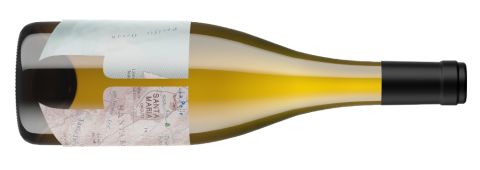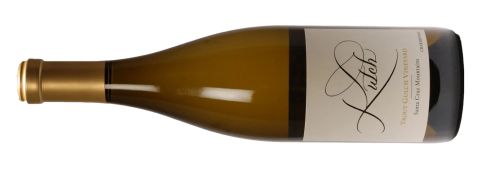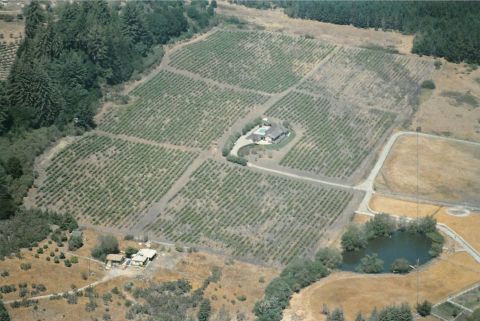Here’s a response to San Francisco barrel broker Mel Knox’s June comment in our Members’ forum: ‘The true Central Coast – essentially the region between San Luis Obispo and Ventura – does not get as much press as it should. One would think the writers from LA would be all over it, but it is the wine regions north of SF that get all the love.’
This week’s wine of the week is actually two, both from south of San Francisco and one plumb centre of the Central Coast, from Mel’s beloved Santa Maria Valley. Why two? The greatest problem we have when choosing a wine of the week is finding a single wine with usefully international distribution. Our general minimum for wines of the week is that they are available retail in both the UK and US, but we love it when we find a wine that is a really good buy and is well distributed throughout the world. These turn out to be not just famous brands but sometimes quite esoteric wines with especially energetic export salespeople.
My first California Chardonnay is, as far as I can see, available only in the US and in my view deserves more attention. I wrote in How to own a vineyard without getting your boots dirty about Pete Richmond of Silverado Farming vineyard management company and his right-hand man Miguel Luna, who has quite a story about being uprooted from Mexico as a 12-year-old knowing no English to live in Napa Valley.
La Pelle is Luna’s side project, conceived with Richmond and Maayan Koschitzky, an associate of well-known wine consultant Philippe Melka. The range is mainly variations on the Napa Cab theme, plus a Napa Sauvignon Blanc (the variety that’s all the rage there at the moment), but this Central Coast wine was my favourite of La Pelle 2021s. (The range, incidentally, is named after the French for a shovel, a reference to the hard work of people like Luna in producing wine.)
He was able to get his hands on fruit for La Pelle, Bien Nacido Vineyard Block 1 Chardonnay 2021 Santa Maria Valley from the oldest Chardonnay vines in one of the most famous vineyards in the Central Coast because Richmond goes back a long way with Bien Nacido’s owners, the Miller family. Richmond had always loved the sophisticated, long-lived Chardonnays of Au Bon Climat, which owe much to Bien Nacido fruit.
This 12.5% wine was aged for 12 months in oak and finished off, as at Leflaive, in tank. It’s delightfully restrained on the nose before really lively fruit with lime notes and a delicate, precise impact on the palate. It’s very unlike the fat, sweet, popcorn stereotype that has so far characterised California Chardonnays.
I gave it 17 out of 20, suggest drinking it over the next three or four years, and thought it well worth the price in a US context. Wine-Searcher lists two stockists in Napa at $65 and $69.95 respectively. It’s also listed by Sotheby’s Wine Retail in New York at $79.95. Seek it out!
Kutch, Trout Gulch Chardonnay 2022 Santa Cruz Mountains on the other hand has just arrived at Roberson Wine in London at £60 a bottle. Americans can also buy it, exclusively direct at $59 a bottle via the producer’s mailing list.
According to winemaker Jamie Kutch, ‘the wine will be available in Denmark with Laudrup whom I import with, and also in Sweden with my importer The Wine Agency.’
Kutch deserves thanks from us non-Americans for his unusually hard work in developing these export markets. His wines, mainly notably elegant Pinot Noirs from northern California, have been available in the UK for many years and you can find 95 tasting notes on his wines in our tasting notes database (now more than 262,000-strong).
It’s therefore perhaps a bit perverse of me to choose this exceptionally beautifully balanced Chardonnay as my first Kutch wine of the week rather than one of his Pinots, but I do love it. As Roberson point out online, the vines in the Santa Cruz Mountains between Silicon Valley and the ocean tend to be considerably older than further north. If you’re not interested in the background to this unusual vineyard, admittedly further north than the area Mel Knox refers to but well south of San Francisco, skip to * below.
Bernie Turgeon, a decorated war veteran and then carpenter working south of San Francisco, fell for wine. In the 1960s he volunteered for harvest and cellar work with Santa Cruz Mountains Pinot pioneers Martin Ray and David Bruce. For a few years he was in business with Jerry Lohr developing Monterey as a wine region but decided making and selling J Lohr wines in quantity was not for him. He pivoted to brewing and helped to establish the Santa Cruz Brewing Co, an early microbrewery, in 1985. Afterwards he scouted around for a suitable site for a small, high-quality vineyard and in 1987 bought the Miller Ranch at 3875 Trout Gulch Road. The picture at the top of this article shows Helene and Ron Miller on the left with the real estate agent who closed the sale of the Trout Gulch property to them in 1978 on the right.
It had initially been planted by the Millers (not the Millers of Bien Nacido) in 1980 and 1981 but had fallen into disrepair, gophers having feasted on too many vines and drainage being less than ideal. It had a great location, however, facing south on a gentle slope from 750–800 ft (230–245 m) above the ocean just 3.5 miles (5.6 km) away, a usefully cooling influence. Turgeon went on to replant the missing 50% or so vines. The original 19-acre vineyard was almost entirely Wente clone Chardonnay, but the missing vines were replaced by a Dijon clone, identified as clone 17 by Kutch, on SO4 rootstock. There was also some Martini clone Pinot Noir and Concannon clone Cabernet Sauvignon which never ripened and was soon top-grafted over to Mount Eden clone Pinot Noir. Turgeon ended up with 12 acres (5 ha) of Chardonnay and seven acres (3 ha) of Pinot Noir.
Bernie’s son Gerry has written at length about the establishment of the current Trout Gulch vineyard and points out:
‘… three things were imperative in the early stages of renewal: 1) a stringent gopher trapping regimen, 348 the first season, 1988, 2) two miles of French drains were installed to remove excess groundwater, and 3) drip irrigation was installed to get water to the young plants. The entire vineyard was dry-farmed when we took over and we stopped irrigating once the “babies” were well established, around 1993.
‘During our years there we averaged about 50 inches of annual rainfall, all between mid October and early May. We experienced El Niño and La Niña harvests in 1988 and 1989. Sometimes the rainstorms were so fierce that they washed the topsoil from the top of the vineyard ridge down to its base and we had to haul it back up and reposition it when the storms were over. Bernie’s friend Don Harris moved on to the property to oversee daily ops. Don had been the chief building inspector for the City of Saratoga during my dad’s construction days and their friendship went way back. Don was also an ace mechanic and worked tirelessly maintaining our [second hand] tractors and equipment. Some of my best memories were doing manual labour up at Trout Gulch with my dad who drove up from his home in Cupertino three or four times a week.
‘We had vigorous growth, especially in the Chardonnay which required cane cutting and shoot thinning religiously. We also did a lot of leaf removal on the downhill-side of the rows as to get sun and air movement on the developing grape clusters. The prevailing weather pattern is coastal, resulting in routine fog and cloud cover that usually burned off by 11 am. Our climate was a cool region I on the UC Davis scale, making for one of the longest growing seasons in California vineyards. Bernie liked that and felt it gave us tremendous potential for developing quality in both Chardonnay and Pinot Noir.
‘Around 2000 my dad, under pressure from my mom, decided to start simplifying his life and it was decided to sell the vineyards. Our neighbours had long been interested in acquiring more land to add to their equestrian estate. We worked a deal with them and sold in 2004. Sadly, as horses were their priority, they removed several rows of Pinot Noir to make room for an arena and stables. These are visible in the lower-centre of the aerial photo of the vineyards.’
*Today the vineyard is owned and farmed by local vintner Richard Alfaro of Alfaro Family Vineyards, who sells fruit not just to Jamie Kutch but to two other excellent producers, Arnot-Roberts and Ceritas. The Arnot-Roberts version is also sold in the UK by Roberson.
Kutch, by the way, uses lighter bottles than many of their peers, but could still do better in this respect! It’s interesting to see that punitive tariffs have recently been imposed on bottles imported into the US.
And the wine itself? Kutch’s Chardonnay fruit was picked on 19 September and then, as with all Kutch wines, spontaneously fermented. He made five French oak barrels-worth, one of them new, after whole-bunch pressing. The wine is 13% alcohol and this is my tasting note for a score of 17.5 out of 20 and suggested drinking dates 2024–2031:
Wonderfully bright, energetic but fully ripe fruit that informs a wine that’s already a pleasure to drink. Complete. Great fruit/acid integration and a slightly saline note on that lime framework. My kinda Chardonnay ... Quite long. I'd love to taste a fully mature version of this wine.
The two wines are distinctly burgundian in technique and style – and price.
And each is from a notable, mature vineyard south of San Francisco, heavily influenced by the Pacific.
Find Kutch Chardonnay in the UK and in the US.
Read more about Santa Maria Valley and Santa Cruz Mountains wines.


















